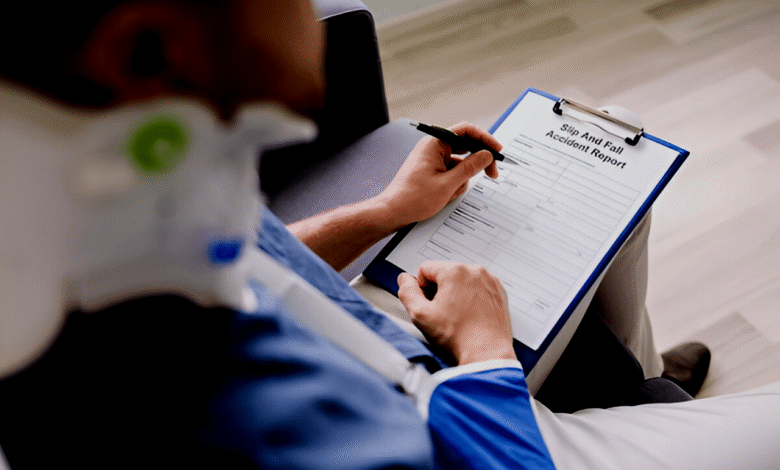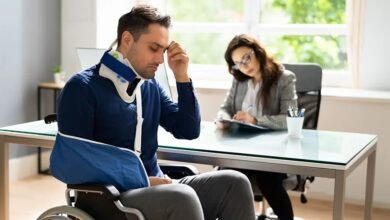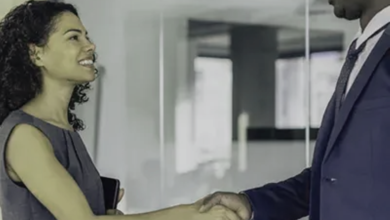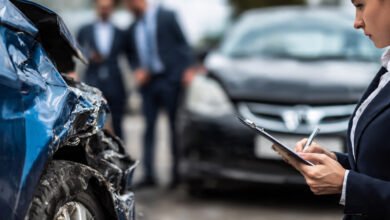Slip and Fall Claims in California Your Legal Rights in 2025
Slip and fall claims in California Know your 2025 legal rights compensation options and how to prove property owner negligence for maximum recovery.

Slip and Fall Claims accidents can happen anywhere supermarkets, office buildings, or even private residences and often result in serious injuries, medical expenses, and lost wages. If you’ve been injured due to unsafe property conditions in California, understanding your legal rights is crucial in 2025. Property owners have a legal obligation to maintain safe premises, and failure to do so may entitle you to compensation for your injuries. This guide explores key aspects of slip and fall claims, including liability, negligence, and recent legal updates to help you protect your rights.
In California, slip and fall claims fall under premises liability law, meaning property owners can be held responsible for injuries caused by hazardous conditions like wet floors, uneven pavement, or poor lighting. However, proving negligence requires strong evidence, such as photos of the hazard, witness statements, and medical records. With legal standards continually evolving, staying informed about your rights in 2025 can make a significant difference in the outcome of your case. Whether you’re dealing with insurance companies or considering legal action, knowing the proper steps to take after a fall is essential for securing fair compensation.
Slip and Fall Claims in California Your Legal Rights in 2025
Legal Basis for Slip and Fall Claims Premises Liability
In California, slip and fall cases are governed by premises liability law, which requires property owners to maintain safe conditions for visitors. This legal doctrine applies to both private and commercial properties, including stores, apartment complexes, and public spaces. To establish liability, the injured party must prove The property owner owed a duty of care (e.g., business owners must ensure safe floors for customers). A dangerous condition existed (such as wet floors, uneven pavement, or poor lighting). The owner knew or should have known about the hazard but failed to repair it or provide adequate warning.
Common Locations and Hazards Leading to Slip and Fall Accidents
Slip and fall incidents often occur in high-traffic areas where hazards may go unaddressed. Some frequent locations and causes include Retail Stores & Supermarkets: Spills, unmarked wet floors, or cluttered aisles. Sidewalks & Parking Lots: Cracked pavement, potholes, or inadequate lighting. Restaurants & Bars: Greasy floors, loose rugs, or slippery staircases. Residential Slip and Fall Claims Poorly maintained walkways, uneven steps, or lack of handrails. In each scenario, property owners may be held liable if negligence contributed to the accident.
Key Elements of a Slip and Fall Claim
Duty of Care
Under California premises liability law, property owners and occupiers have a legal duty to maintain reasonably safe conditions for all lawful visitors. This responsibility varies depending on the visitor’s status: business invitees (like customers) are owed the highest Slip and Fall Claims, while social guests (licensees) are entitled to warnings about known hazards.
Breach of Duty
A property owner breaches their duty of care when they either knew or should have known about a dangerous condition yet failed to take reasonable action to address it. This breach occurs when the owner neglects to repair the hazard within a reasonable timeframe, fails to implement proper maintenance procedures, or doesn’t provide adequate warnings about temporary dangers like wet floors or construction areas.
Causation
To establish causation in a slip and fall claim, the victim must demonstrate that the hazardous condition was the direct and proximate cause of their injuries. This requires showing that the dangerous situation (like a wet floor or broken stair) actually made Slip and Fall Claims, and that the resulting injuries wouldn’t have happened without this specific hazard.
Damages
In slip and fall cases, recoverable damages must be quantifiable and directly tied to the accident. Medical expenses form the foundation, covering everything from emergency treatment to long-term rehabilitation, with documentation required for all procedures, medications, and assistive devices. Lost wages calculations include not just immediate income disruption but also diminished earning capacity for serious injuries.
Proving Negligence in Slip and Fall Cases
Under California’s pure comparative negligence system, a slip and fall victim’s compensation can be proportionally reduced by their percentage of fault if a jury determines the victim was 30% responsible for their injury by being distracted, Slip and Fall Claims, their total damages would be reduced by 30%. Strong evidence like timestamped surveillance footage showing the hazardous condition and the fall, credible witness testimony about the property’s dangerous state.
Recent Legal Changes Affecting Slip and Fall Claims in 2025
California’s 2025 legal updates have significantly strengthened slip and fall protections for injured parties. Businesses now face stricter maintenance mandates requiring documented, frequent safety inspections with heightened accountability for violations. The state has raised compensation limits for non-economic damages like pain and suffering, particularly for serious injuries affecting quality of life. Courts now give greater weight to digital evidence, including timestamped smartphone photos/videos of hazards, electronic maintenance logs.
Steps to Take After a Slip and Fall Accident
After a slip and fall accident, taking immediate action strengthens your potential claim. First, seek medical attention to Slip and Fall Claims and create an official record linking them to the incident. Next, formally report the accident to the property owner or manager and obtain a written incident report. Then, gather critical evidence by photographing the hazardous condition, securing surveillance footage if available, collecting witness statements.
Compensation in Slip and Fall Cases
In successful slip and fall cases, California victims can recover multiple forms of compensation. Economic damages include all medical expenses (from emergency care to ongoing rehabilitation) and documented lost wages (including future earnings for long-term injuries). Non-economic damages cover pain and suffering, emotional distress, and Slip and Fall Claims, calculated based on injury severity and duration.
Common Defenses in Slip and Fall Cases
Property owners facing slip and fall claims often raise three key defenses to limit liability. First, they may argue the hazard was “open and obvious,” asserting that any reasonable person would have noticed and avoided the danger (like a clearly visible wet floor sign). Second, they may claim the injured party was trespassing, which significantly reduces the property owner’s duty of care in California. Third and most commonly, owners allege comparative negligence, arguing the victim’s own inattention contributed to the accident.
Read More: How to File for Divorce in California Without a Lawyer
Conclusion
Slip and fall accidents can have life-altering consequences, leaving victims with mounting medical bills, lost income, and lasting pain. If you’ve been injured due to unsafe property conditions in California, understanding your legal rights in 2025 is the first step toward securing the compensation you deserve. Property owners have a duty to maintain safe premises, and Slip and Fall Claims, California law provides avenues for victims to recover damages. By documenting evidence, seeking prompt medical attention, and consulting with an experienced personal injury attorney, you can build a strong case to hold negligent parties accountable.
As premises liability laws continue to evolve, staying informed about slip and fall claims in 2025 is more important than ever. Whether negotiating with insurance companies or pursuing litigation in court, having knowledgeable legal representation can significantly impact the outcome of your case. Remember, time is of the essence California’s statute of limitations restricts how long you have to file a claim. If you or a loved one has suffered injuries in a slip and fall accident, taking immediate action ensures your rights are protected and maximizes your chances of obtaining fair compensation for your injuries and losses.
FAQs
How long do I have to file a slip and fall claim in California?
California’s statute of limitations is two years from the injury date, but exceptions may apply.
Can I sue if I slipped in a public place?
Yes, if the city or business failed to maintain safe conditions, you may have a claim.
What if I was partially at fault for the fall?
California’s comparative negligence rule allows recovery, but compensation may be reduced.
Do I need a lawyer for a slip and fall claim?
While not mandatory, a lawyer improves your chances of fair compensation.
What damages can I recover in a slip and fall case?
You may claim medical bills, lost wages, pain and suffering, and sometimes punitive damages.











